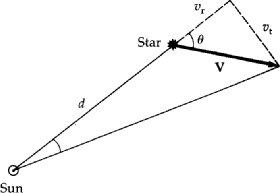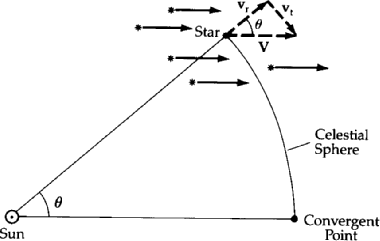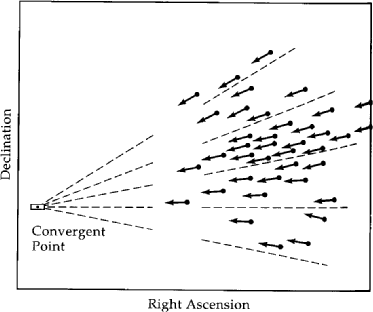Moving Cluster Parallaxes
| Remember what the space motion of a star looks
like:
the total space velocity V can be broken into the radial
velocity (vr) and the tangential velocity (vt)
-
The radial velocity we get via its doppler shift.
-
To get the tangential velocity we need its proper motion
and distance:

which would be in units of pc/yr if d was in pc and mu
in radians/yr.
We can convert this to more familiar units:

where pi is parallax in arcsec and mu is proper motion
in arcsec/yr.
|

|
So if we know proper motion and distance, we can solve
for tangential velocity. Alternatively, if we knew tangential velocity
and proper motion, we could solve for distance. That's the key to the moving
cluster parallax. Watch this...
Think of a cluster of stars moving through space. Their
proper motion will appear to converge towards a certain point in space
called the convergence point:
|
from geometry, we know that
|
 |
|
so that
|
 |
|
Equating our two expressions for vt
we get
|
 |
|
or
|
 |
So if we measure the proper motion, radial velocity, and
convergence point distance, we get the "parallax" -- or really the distance
-- to the cluster.
Question: Why is it helpful
to get the distance to a star cluster rather than to a bunch of individual
stars scattered randomly in space?
![]()
![]()


